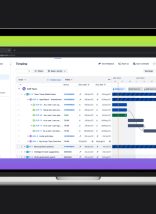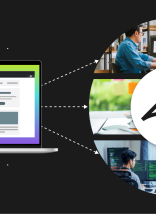As the deadline for Section 508 compliancy approaches, it’s important to remember that making a website more accessible isn’t just another task on the to-do list. It matters to people you see every day, perhaps even people you know well but never suspected needed a web experience different from yours. People like me.
I never thought of my hearing impairment as a barrier when I was a child; it was simply a part of who I was. In middle school, that special time of security and confidence, it suddenly became more obvious. My fairly discreet hearing aids were being hooked up to an F.M. system, complete with attachable wires and a fanny pack to elevate my total lack of fashion. My teachers would wear a microphone, which allowed their voices (and occasional bathroom breaks) to supercede any outside noise and be broadcast directly into my ears. This was great for my education, but I was terribly self-conscious. I was different and now everyone knew.
Oh, how I tried to be cool about it, but bravado has never been my calling card. If someone was becoming frustrated by having to repeat themselves, I would ask if they could communicate via the beauty of interpretive dance. This only made me weirder. My teachers were rarely subtle about what I needed and while I was grateful for their help, this often caused me to shrink away.
Balance: Manage Accessibility and Inclusivity
It’s a given that UX manifests itself in a variety of ways. How accessibility is approached by an organization affects the experience an impaired user may have. It should be considered with the same thoughtfulness and care that any design element would require. Being knowledgeable and prepared, thanks to a strong vision and the right team to implement it, can provide accessibility without the ironic isolationism that can sometimes come with it.
Accessibility services helped me stay on track, but I was always pulled away from the rest of my class in order to do so. Having to be forthcoming about my hearing loss was panic-inducing. In response, people often raised their voices to an abnormal level and spoke slowly, as if it was my comprehension skills that were lacking. I felt like a burden.
Adaptation: Like Nicholas Cage, But Not
Years later I decided that with enough focus and some decent lip reading skills, I could pretend that my hearing loss didn’t exist. This was achieved with varying levels of success. I no longer felt like a weight on the patience of my friends and family but now I was the one removing myself from certain situations in order to get by. I still couldn’t really be in the same room as everyone else.
Now, as a fairly competent adult, I no longer struggle as I did with insecurity surrounding my hearing. It provokes some anxiety here and there but I’ve learned how to adapt and how to ask for help without shame. Friends often respond with surprise when they learn that my ears are more decorative than they are functional. I don’t strike them as someone who needs any assistance to be on the same page as everyone else. They don’t think I’m a person who is gleeful about captions on a video or the volume of a microphone being turned up just a hair more. The truth is, I am.
Room for Everyone: Improving UX for Your Entire Base
The number of people who will directly benefit from website accessibility is staggering. According to the World Health Organization, 253 million people are visually impaired, preventing them from reading web content without assistance. 360 million people are deaf or hearing impaired. For the sake of perspective, the population of the United States is 323 million people.
Accessibility is also valuable to those with cognitive impairments, those with a temporary disability due to accident or illness, and to the elderly. Advocacy groups, like The A11Y Project, are hard at work raising awareness and providing resources, in an effort to implement change. Section 508 is more than a law to be followed; it’s the right thing to do.
The Art of Accessibility: Taking A11y Action
The benefits of accessibility are not lost on many technology leaders. Red Hat is dedicated to the cause as well as Shopify, who has embraced it as part of their culture. Closed captions on video, audio options for images, and support for assistive technology programs are just some of the ways that a website can be made easier to navigate for all users. An increase in engaged users is a win for everyone.
Inclusivity is vital to the strengthening of our community. This is especially true of web content as our lives and social interactions become more digitalized. The internet is a place where we gather to share information, tell our stories, and help each other. Everyone should be able to be in the same room together.
If you have questions about how to provide accessibility to your organization’s website, visit our page on 508 Compliance.





